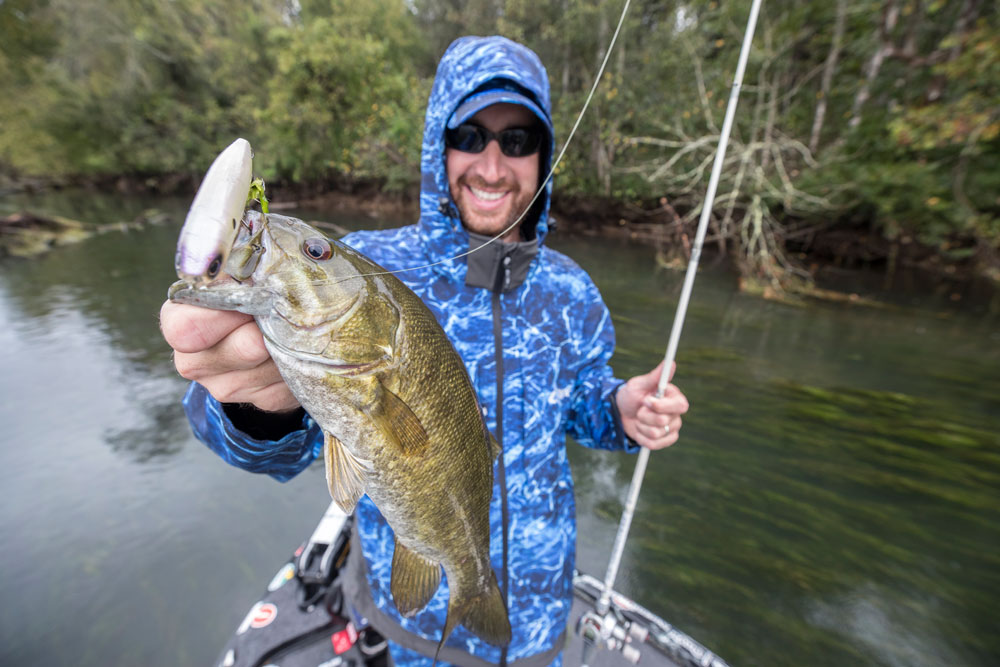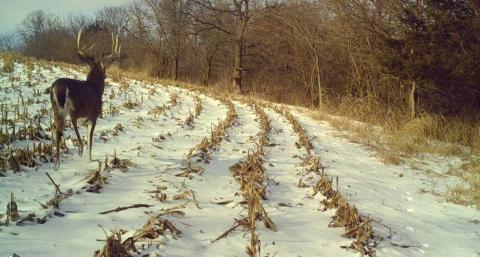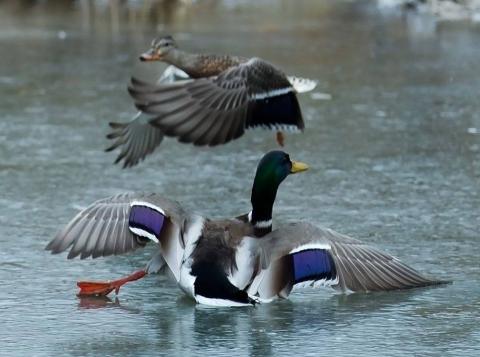Don C. Keller | Originally published in GameKeepers: Farming for Wildlife Magazine. To subscribe, click here.

One of the most frequently asked questions to private-fisheries consultants is “How can I make my largemouth bass grow faster and larger?” To produce heavier fish, you not only have to increase the length but also the girth. Bass management in ponds is complex. Considerations include stocking rates for new ponds, feed and fertilization rates, liming, harvest rates, and the prey fish species to use in the pond. All of these factors will influence the bass population, but the prey fish species in the pond is a critical factor that deserves very careful consideration.
Almost all good bass fishing ponds have bluegill as a primary forage base, but other species can be added to increase the food available for bass. One of the basic principles of pond management is that fish grow rapidly if they have plenty of food but very slowly or not at all if food is scarce. For most ponds in the South, within 18 months after the initial stocking, the pond is usually supporting the maximum weight of fish for which food is available.
The most common problem faced by lake owners today is one in which the bass population is stunted due to lack of adequate forage. The larger the lake the more difficult this problem is to correct. Most lakes get into this condition as a result of the landowners being too conservative in their harvest of bass the first few years. This situation is similar to a deer herd over-browsing its vegetative food source, or too many cattle grazing the pasture grass down to the dirt. The first step to correct this problem is to aggressively remove bass by hook and line. It is usually recommended to remove the smaller bass, those that are 15 inches and under. This will allow the bluegill population to expand and eventually furnish more food for the bass. One of the simplest and quickest ways to add more food is by stocking an additional forage fish that spawns heavily and does not outgrow the size range that the average bass can eat.

Threadfin shad have proved to be excellent supplemental forage when stocked in private fertile waters. Threadfin rarely exceed five inches in length, making them an ideal size food item for almost all predators. Threadfin are pelagic (open water) schooling fish. A flurry of shad breaking the surface means that there are larger fish feeding on them from below.
This tight schooling activity means that shad can provide a great deal of food for the bass even though each individual shad may only be 3 to 4 inches long. In a study in California, one 15- pound striped bass was examined that had almost 700 threadfin shad in its gut. In a reservoir or a pond, largemouth bass do not feed on individual shad but rather engulf dozens at a time when they come up beneath a school. If the bass are feeding on bluegill, they usually have to chase them down one at a time. The threadfin shad is closely related to the gizzard shad but does not grow as large and is more temperature sensitive. They are a temperate species, and some mortalities occur when the water temperature drops below 43 degrees F.

threadfins that are 2.5 inches can be sexually mature. Primary
spawning occurs from mid-March through June, but spawning
has been documented throughout the summer and early fall.
Deeper lakes tend to provide areas that act as thermal sanctuaries. The threadfin can usually be distinguished from the gizzard shad by its smaller body size and its yellow fins, especially the yellow in the caudal or tailfin. Smallmouth and striper fishermen sometimes refer to them as “yellowtails.” Threadfin shad are sexually mature at approximately 2 to 2 ½ inches. Spawning begins in the spring when the water temperature reaches 65 to 70 degrees F. Threadfin are heavy spawners with a single female capable of laying 10-12,000 eggs.
Spawning has been documented from March to mid-September. Females, trailed by several males, lay eggs along the shoreline, usually around daylight and the adhesive eggs stick to aquatic vegetation. Hatching occurs in about three to five days. The fry have clear bodies and are almost invisible to the naked eye until they are about an inch long. Shad are filter feeders and feed on both phytoplankton (microscopic one-cell plants) and zooplankton (microscopic animals). They are so efficient at filtering that some catfish farmers have begun stocking shad in their production ponds to improve water quality. However, sometimes this filtering ability can have a negative impact on the bream population since young bluegill also feed on zooplankton.
If the pond owner wants to produce large bluegill where shad have been introduced, then the use of automatic fish feeders is advised. Large, well-fed bluegill will produce more offspring, which will also enhance the growth of the largemouth bass. Small gizzard shad closely resemble adult threadfin shad. Therefore, it is best for the lake owner to purchase shad from a reliable supplier that has a pure culture of threadfin.
Threadfin are extremely delicate and must be handled with care. They are usually harvested from the hatchery pond, loaded onto an oxygenated tank truck and transported directly to the customer’s pond. Once the truck is at the pond, the fish are discharged through a pipe to avoid handling. Although the existing bass population will eat some of the shad, many will escape to spawn and become established in the owner’s lake.

distinguish threadfin shad from gizzard shad. Small gizzards
are often mistaken for threadfin because of their similar shape
and silver sides.
Another benefit of having threadfin in your lake is the exciting fishing it creates. Once shad are established, they will often school near the surface late in the afternoon. When the waters are calm, schools of shad ranging in size from 5 to 10 feet in length can be seen creating a very gentle rippling effect on the surface of the water. This almost always triggers a feeding response from the largemouth bass. As the bass attacks underneath the school, it appears as if a small depth charge has gone off and someone has thrown a handful of silver dollars into the air. This activity has caused the author many a backlash as I tried to capitalize on this feeding frenzy. In summary, if your objective in managing your lake is to produce bigger and heavier largemouth bass, then there are several management strategies you will need to implement. One thing that you should consider is putting them on a diet of threadfin shad.
Don C. Keller is a Certified Fisheries Scientist and co-owner of American Sport Fish Hatchery. He is a recognized authority on bass management and has authored numerous articles on that subject.































